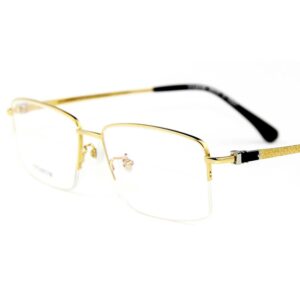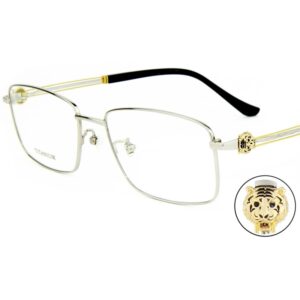As the winter ski season approaches, selecting the right gear becomes crucial, and ski goggles are an essential part of that. Not only do they protect your eyes from harsh sunlight and flying snow, but they also enhance visibility, making your skiing experience safer and more enjoyable. The 2024 ski goggle market has seen numerous innovations, with advancements in lens technology, fit, and compatibility. Whether you’re a seasoned skier or a beginner, understanding the latest trends and the best products is key to making an informed decision.
Lens Technology
Lens technology is arguably the most critical aspect of ski goggles. With varying light conditions and unpredictable weather, the right lens can significantly enhance your skiing experience. In 2024, ski goggles have made significant strides in lens types and coating technologies, providing skiers with a broader range of options to meet different conditions.
Lens Types
Different lens types cater to different skiing environments. Here’s a breakdown of the main lens types and their advantages:
| Lens Type | Benefits | Ideal Conditions |
| Photochromic Lenses | Automatically adjust to varying light intensities for optimal vision. | Environments with frequently changing light, such as sunny and overcast conditions. |
| Polarized Lenses | Reduces glare by filtering scattered light, enhancing visual clarity. | Bright, sunny conditions with strong glare, such as on mountain slopes. |
| Double Lenses | Provides an additional insulating layer, effectively preventing fogging. | Cold, humid environments where fogging is a concern. |
| High-Contrast Lenses | Enhances color and contour visibility, ideal for variable weather and low light. | Overcast, foggy, or low-light conditions, especially on complex terrains. |
In 2024, photochromic lenses have improved, reacting faster to changes in light and providing smoother transitions. Polarized lenses continue to be a favorite for bright, reflective snow conditions, reducing eye strain and improving clarity. Double lenses, by trapping a layer of air between the lenses, offer superior anti-fog performance, which is particularly beneficial in cold, moist conditions. High-contrast lenses, on the other hand, make terrain features more distinguishable in poor lighting, helping skiers navigate challenging environments more safely.
Lens Coatings
Lens coatings also play a significant role in enhancing the performance of ski goggles. The 2024 models feature advanced coatings that increase durability and functionality:
- Anti-Scratch Coating: Ski goggles often encounter collisions with ice, snow, and branches, making anti-scratch coatings essential for maintaining lens clarity over time.
- Anti-Fog Coating: Even with double lenses, anti-fog coatings remain crucial, especially during extended skiing sessions or when sweating. These coatings help keep your vision clear by preventing moisture buildup on the lens surface.
- Lens Tint and Light Adaptation: Different lens tints offer varying benefits. Yellow or amber lenses enhance contrast in low light, while gray or brown lenses reduce glare in bright sunlight, protecting your eyes from harsh UV rays.
Overall, the 2024 ski goggles have seen significant advancements in lens technology, offering a wider range of lens types and coatings to meet the diverse needs of skiers. By choosing the right combination of lens type and coating, skiers can ensure optimal performance and eye protection in various weather and light conditions.
Fit and Comfort
Beyond lens technology, comfort is a crucial factor in ski goggles, as they are often worn for extended periods. The 2024 ski goggles have introduced several improvements in fit, from frame design to ventilation and padding.
Frame Design
The frame design of ski goggles has a significant impact on comfort. In 2024, manufacturers have focused on creating designs that cater to different preferences and skiing styles:
| Design Type | Features | Ideal For |
| Full-Frame Design | Offers better protection and support, ideal for skiing in densely wooded areas. | Forest skiing or areas requiring more protection. |
| Frameless Design | Reduces weight and offers a wider field of view, perfect for open terrain. | Open slopes or skiers seeking a broader view. |
| Soft Materials | TPU (Thermoplastic Polyurethane) material is soft and hypoallergenic, improving comfort. | Long-duration skiing, especially for those with sensitive skin. |
| Adjustable Straps | Wide strap design with added elasticity ensures stability and comfort. | High-speed skiing or skiers who frequently adjust helmets. |
Full-frame designs provide added protection and are ideal for skiing in wooded or complex environments. Frameless designs, on the other hand, offer reduced weight and a broader field of view, making them popular among skiers who prioritize visibility. The use of soft, hypoallergenic materials like TPU has significantly improved comfort, especially for skiers with sensitive skin. Additionally, the 2024 models have introduced wider, more elastic straps that ensure a stable fit even during high-speed skiing.
Ventilation and Anti-Fog Design
Good ventilation is critical for preventing fogging and enhancing comfort. The 2024 ski goggles have made significant strides in ventilation design:
- Ventilation Systems: Effective ventilation systems are essential for keeping the lenses clear of fog. The 2024 goggles have added vents on the top and sides of the frames, promoting better airflow and reducing the temperature difference between the inside and outside of the lenses, which helps prevent fogging. For skiers who engage in intense activities or ski in humid conditions, this improvement is particularly beneficial.
- Foam Padding: The comfort of ski goggles is also heavily influenced by the foam padding that sits against the face. The 2024 models have upgraded to multi-layered foam padding that is both softer and more breathable, ensuring a snug fit without causing discomfort or pressure points.
These advancements in ventilation and padding have taken ski goggle comfort to new heights in 2024, allowing skiers to focus on their performance without being distracted by fogged lenses or uncomfortable gear.
Compatibility and Adaptability
A good pair of ski goggles should not only be comfortable and high-performing but also compatible with other essential gear like helmets and prescription glasses. In 2024, ski goggles have been designed with greater adaptability, ensuring they fit seamlessly with a wide range of helmets and accommodate those who wear glasses.
Helmet Compatibility
Compatibility with helmets is crucial for both safety and comfort. In 2024, ski goggle manufacturers have refined their designs to enhance compatibility with different helmet types.
- Frame Curve Design: The curve of the goggle frame plays a key role in how well it fits with a helmet. The 2024 models feature frames that have been specifically designed to align better with the contours of modern helmets. This design improvement ensures that the goggles remain securely in place, even during intense skiing sessions.
- Adjustable Straps: Wide and elastic adjustable straps have been a focus in 2024, ensuring that goggles stay in place when worn over a helmet. The enhanced adjustability means that these goggles can fit a variety of head sizes and helmet shapes, providing a secure and comfortable fit.
OTG (Over the Glasses) Design
For skiers who wear prescription glasses, OTG ski goggles are essential. In 2024, many brands have optimized their OTG designs to provide better comfort and functionality.
- Optimized OTG Design: The 2024 OTG ski goggles have larger frames and more interior space, allowing them to comfortably accommodate most prescription glasses without compromising the goggle’s fit or sealing.
- Foam Padding Adaptation: The foam padding on these OTG goggles has been specifically adapted to work well with glasses, ensuring a tight seal against the face while minimizing pressure on the temples. This ensures that skiers can wear their prescription glasses comfortably under the goggles, maintaining clear vision and preventing fogging.
These improvements in compatibility and adaptability make the 2024 ski goggles versatile options that can meet the needs of a wide range of skiers, whether they wear helmets, glasses, or both.
Top Brands and Recommended Models
When it comes to choosing the best ski goggles, the brand and model can significantly impact your skiing experience. The top brands in 2024 have each released new models that offer impressive advancements in lens technology, comfort, and compatibility.
Top Brands Overview
- Oakley: Oakley continues to lead the market with its innovative Prizm lens technology, which enhances contrast and clarity in a variety of light conditions. Their goggles are known for their durability and comfort, making them a top choice for serious skiers.
- Smith Optics: Smith Optics is renowned for its anti-fog technology and excellent helmet compatibility. Their ChromaPop lens technology is a standout feature, providing enhanced color and detail recognition in changing light conditions.
- Anon: Anon is celebrated for its magnetic lens-changing system, which allows skiers to quickly adapt to changing light conditions without removing their goggles. Their MFI (Magnetic Facemask Integration) technology offers a seamless connection between the goggles and facemask, making them a popular choice for all-weather skiing.
Recommended Models for 2024
Oakley Flight Deck Prizm: This model features Oakley’s Prizm lens technology, which significantly improves contrast and detail in various lighting conditions. Its frameless design offers a wide field of view, making it ideal for skiers who need maximum visibility.
Smith I/O Mag: The I/O Mag combines Smith’s ChromaPop lens technology with a magneticSmith I/O Mag: The I/O Mag combines Smith’s ChromaPop lens technology with a magnetic lens interchange system, allowing skiers to quickly adapt to changing light conditions. Its triple-layer face foam and responsive fit make it one of the most comfortable options for long days on the slopes.
Anon M4 Toric MFI: This model features Anon’s Magnetic Facemask Integration (MFI) technology, offering seamless connection between the facemask and goggles. The wide toric lens provides excellent peripheral vision, and the magnetic lens change system is quick and user-friendly, making it ideal for varying light conditions.
Giro Axis: Known for its EXV (Expansion View Technology), the Giro Axis goggles offer a wide field of view combined with VIVID lens technology, which enhances contrast and definition on the slopes. The quick-change lens system allows for fast adjustments, making these goggles a great choice for those who encounter rapidly changing weather conditions.
Julbo Aerospace: This model features Julbo’s SuperFlow system, which allows the lens to be slightly pushed forward to increase airflow and prevent fogging during strenuous activities like climbing or hiking. The Reactiv photochromic lens adjusts automatically to changing light, providing excellent visibility in a wide range of conditions.
Conclusion
The 2024 ski goggle market showcases significant advancements in lens technology, comfort, and adaptability. Whether you prioritize superior lens performance, all-day comfort, or seamless integration with your helmet and glasses, there is a model that meets your needs. Investing in the right ski goggles not only enhances your skiing experience but also ensures your safety on the slopes. As you prepare for the ski season, consider the features that matter most to you, and choose a pair of goggles that will keep your vision clear and your eyes protected in all conditions.
FAQ: Best Ski Goggles for 2024
1. What are the key features to look for in ski goggles for 2024?
When choosing ski goggles for 2024, focus on these key features:
- Lens Technology: Look for advancements such as photochromic lenses that adapt to changing light conditions, polarized lenses that reduce glare, and anti-fog coatings that maintain clear vision.
- Fit and Comfort: Ensure the goggles have a comfortable fit with features like adjustable straps, soft foam padding, and proper ventilation to prevent fogging.
- Helmet and Glasses Compatibility: If you wear a helmet or prescription glasses, choose goggles designed for compatibility, such as OTG (Over The Glasses) models.
- Field of View: Frameless or low-profile designs offer a wider field of view, which is crucial for peripheral vision on the slopes.
2. How do photochromic lenses in ski goggles work?
Photochromic lenses automatically adjust their tint based on the amount of UV light they are exposed to. When the light is bright, the lenses darken to reduce glare and eye strain. In lower light conditions, they become lighter, allowing more visibility. This makes them ideal for skiing in environments where lighting can change rapidly, such as moving from shaded areas to sunny slopes.
3. Are polarized lenses necessary for skiing?
Polarized lenses are not necessary but can be very beneficial, especially in bright, sunny conditions where glare from the snow can be intense. Polarized lenses filter out scattered light, reducing glare and enhancing clarity, which helps reduce eye strain and improves visibility.
4. What is the advantage of double lenses in ski goggles?
Double lenses provide an additional layer of insulation, which helps to reduce the likelihood of fogging. The air layer between the two lenses acts as a thermal barrier, preventing condensation from forming on the inner lens, which is a common issue in cold or humid environments.
5. How do I ensure my ski goggles are compatible with my helmet?
To ensure compatibility, look for ski goggles that are specifically designed to fit with helmets. Features like adjustable straps, curved frame designs that match the shape of your helmet, and flexible materials that conform to the helmet’s contours are important. Many 2024 models have been optimized for helmet compatibility, reducing gaps and ensuring a snug fit.
6. What are OTG ski goggles, and who should use them?
OTG (Over The Glasses) ski goggles are designed to be worn over prescription glasses. They feature larger frames and extra space inside to accommodate glasses without compromising the goggle’s fit or sealing. These are ideal for skiers who need to wear their prescription glasses while skiing.
7. Which brands offer the best ski goggles for 2024?
Top brands to consider in 2024 include:
- Oakley: Known for their Prizm lens technology, which enhances contrast and clarity.
- Smith Optics: Renowned for their ChromaPop lens technology and excellent anti-fog performance.
- Anon: Popular for their magnetic lens-changing systems and seamless helmet integration.
- Giro: Offers wide-view technology and quick lens change systems.
- Julbo: Known for their photochromic lenses and anti-fog technologies.
8. How do I choose the right lens tint for skiing?
The right lens tint depends on the typical lighting conditions where you ski:
- Yellow/Amber: Enhances contrast in low light or overcast conditions.
- Gray/Brown: Reduces glare in bright sunlight.
- Mirrored Lenses: Reflect more light and reduce overall brightness, ideal for very sunny days.
- Clear Lenses: Best for night skiing or very low light conditions.
9. Are there eco-friendly options for ski goggles in 2024?
Yes, some brands have started offering eco-friendly ski goggles made from recycled materials or sustainable manufacturing processes. These models are designed to reduce environmental impact without compromising on performance or durability.
10. How do I care for my ski goggles to prolong their lifespan?
To extend the life of your ski goggles:
- Store Properly: Always store them in a protective case when not in use.
- Avoid Touching the Lenses: Oils from your fingers can smudge lenses and damage coatings.
- Clean Carefully: Use a microfiber cloth and avoid harsh chemicals or wiping the inner lens, as this can remove anti-fog coatings.
- Dry Them Out: After a day on the slopes, allow them to air dry completely before storing them to prevent mold or mildew buildup.
























